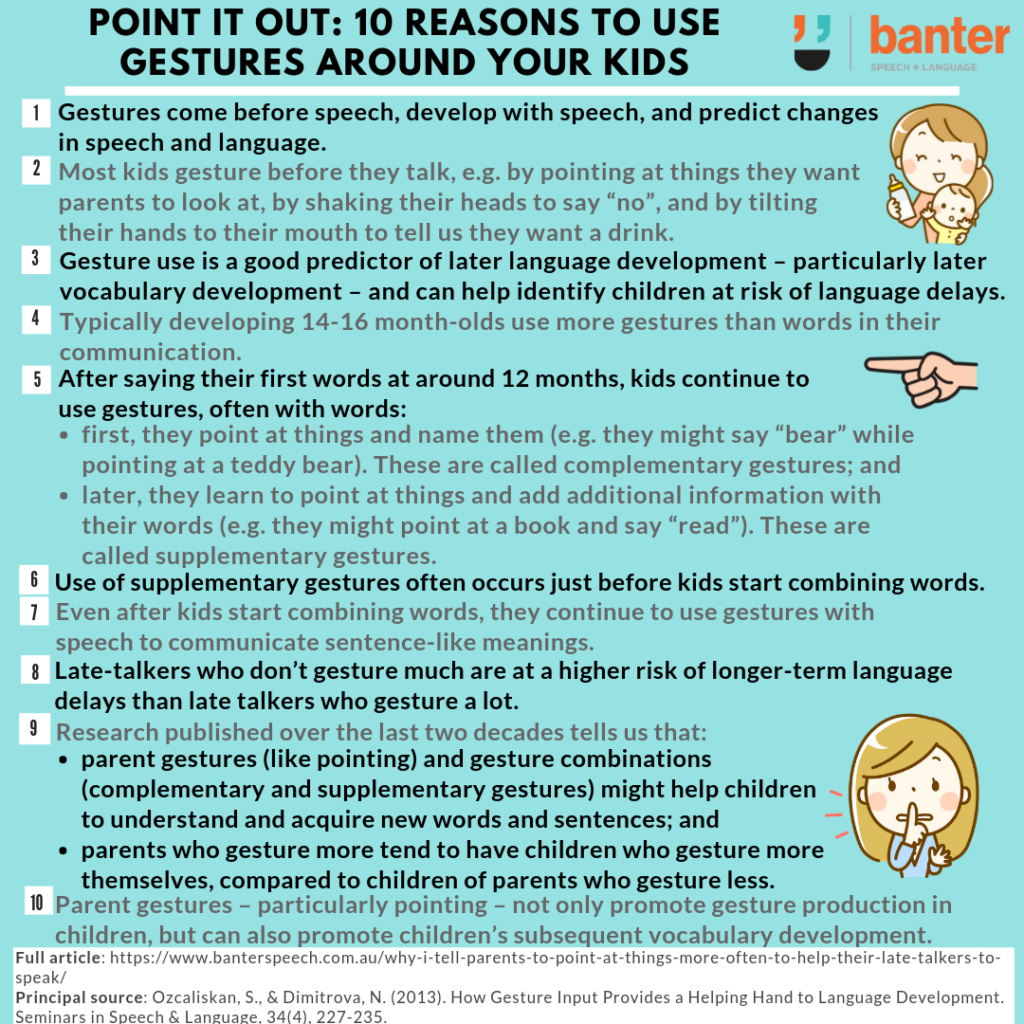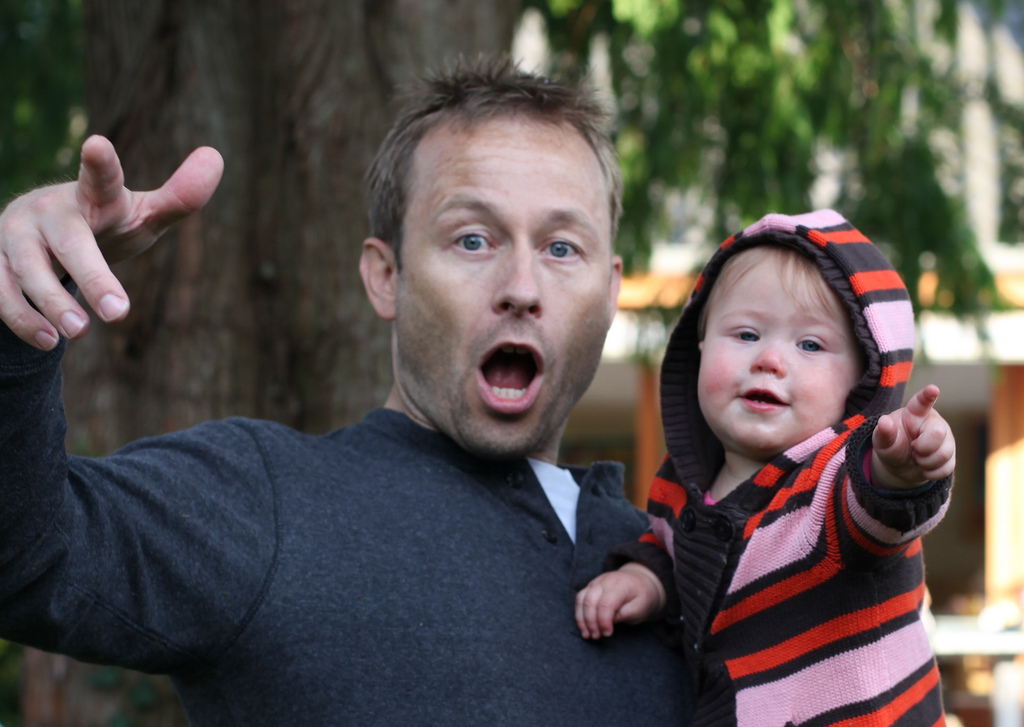Why I tell parents to point at things to help late talkers to speak
Most kids gesture before they talk. For example, they:
- point at things they want parents to look at;
- shake their heads to say “no”; and
- tilt their hands to their mouth to tell us they want a drink.
When assessing potential late talkers, speech pathologists look at the child’s gestures because they can signal imminent changes in spoken language. Gesture use is a good predictor of later language development – particularly later vocabulary development – and can help identify children at risk of longer term language delays.
Why kids’ gestures are so important to language development
Typically developing 14-16 month olds use more gestures than words in their communication. After kids start saying their first words, they continue to use gesture, combining words and gestures:
- first, they point at things and name them (e.g. they might say “bear” while pointing at a teddy bear). These are called complementary gestures; and
- later, they learn to point at things and add additional information with their words (e.g. they might point at a book and say “read”). These are called supplementary gestures because, with the word, they convey two ideas.
The age at which children start using supplementary gestures predicts the age at which they will start combining words (e.g. Iverson, et al., 2005).
Even after kids start combining words, they continue to use gestures with their speech to communicate sentence-like meanings. For example, a child might use a gesture for “push” while saying “I play pram” – communicating the equivalent of the more complex sentence “I am playing with the pram by pushing it”.
So, in short, gesture happens before speech, develops with speech, and predicts future changes in speech. Late talkers who don’t gesture much are at a higher risk of longer-term language delays than late talkers who gesture a lot.
Why parents’ gestures are so important to language development
Typically developing 12 month olds can easily follow an adult’s pointing gesture to a target object (e.g. a toy) (e.g. Butterworth, & Grover, 1988). Most parents gesture when they talk to their young children. Compared to the way they normally gesture in adult conversation, parents modify their use of gestures with young children. For example, parents use lots of complementary gestures (like the bear/bear example above). They also use higher rates of simple gestures (e.g. points). So it seems most parents use a kind of “gesture motherese” with their young children, just as they often subconsciously adapt their spoken language when talking to their children – so called motherese.
Research published over the last two decades tells us that:
- parent gestures (like pointing) and gesture combinations (complementary and supplementary gestures) might help children to understand and acquire new words and sentences (Kelly, 2001); and
- parents who gesture more tend to have children who gesture more themselves, compared to children of parents who gesture less (e.g. Namy et al., 2000).
Of most interest clinically, it turns out that parent gestures – particularly pointing – not only promote gesture production in children, but can also predict children’s subsequent vocabulary development (e.g. Pan et al. 2005).

Clinical bottom line
Parents and other adults working with a late talker can influence the child’s language development positively by gesturing more often with simple gestures. For example, pointing at things as you name them can help children who are not talking at all to understand and say their first words. Similarly, pointing at things and adding information about them (e.g. pointing at a dog and saying “sitting”) can help children who are speaking in single words to start combining words.
My practical tip: when working with a late talker who is not speaking or speaking only in single words, consciously increase your use of simple gestures – especially pointing – to help the child to learn new concepts and language skills.
Related articles:
- I want to help my late talker to speak, but I’m stuck at home. What can I do?
- Late talkers: kick-start language with these verbs
- Late talkers: how I choose which words to work on first
- “He was such a good baby. Never made a sound!” Late babbling as a red flag for potential speech-language delays
- Does my child have a language disorder? 6 questions speech pathologists should ask before assessment
- Are language development and motor development related?
- 6 principles we follow when assessing toddlers for language delays and disorders
- Helping toddlers with their first words – mix it up and make them useful
Principal source: Ozcaliskan, S., & Dimitrova, N. (2013). How Gesture Input Provides a Helping Hand to Language Development. Seminars in Speech & Language, 34(4), 227-235.
Image: http://bit.ly/1i73YVl

Hi there, I’m David Kinnane.
Principal Speech Pathologist, Banter Speech & Language
Our talented team of certified practising speech pathologists provide unhurried, personalised and evidence-based speech pathology care to children and adults in the Inner West of Sydney and beyond, both in our clinic and via telehealth.








